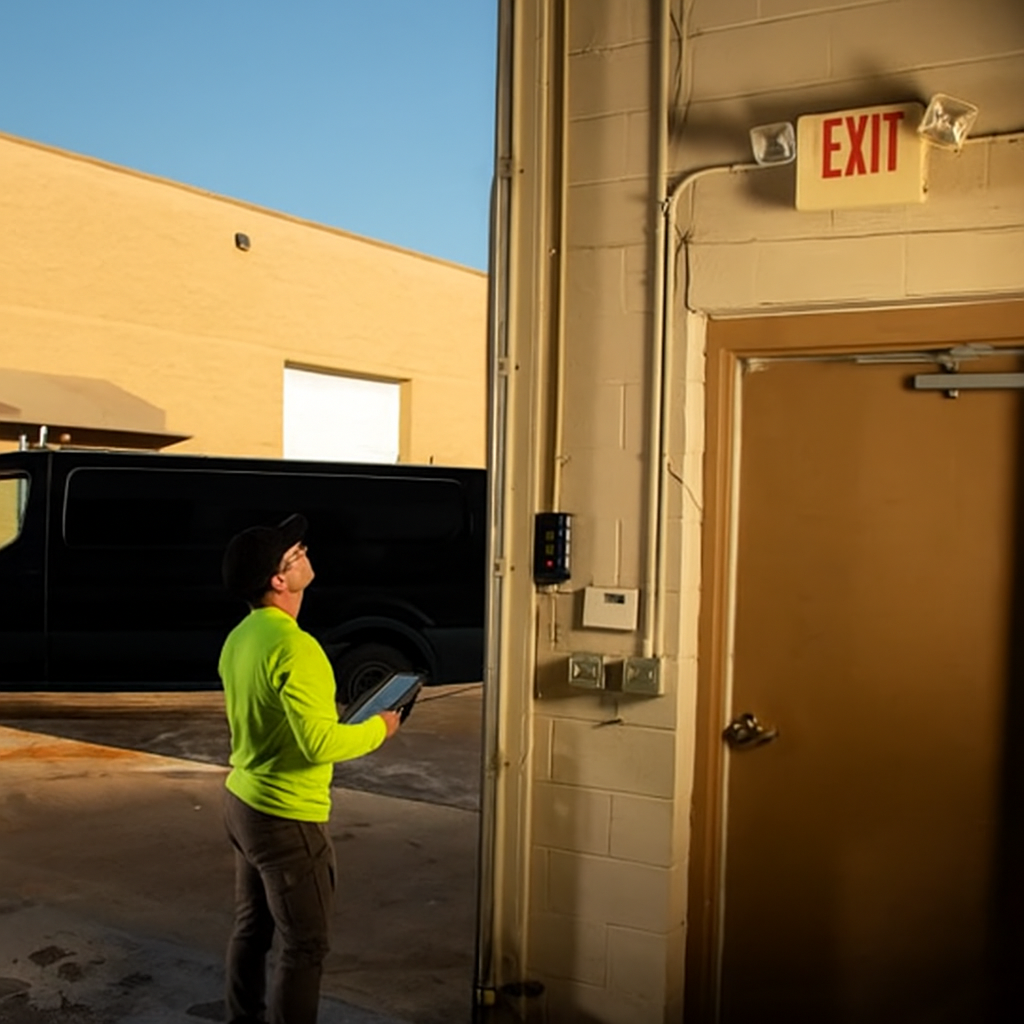Learning Centre
How to Set Up a Door Maintenance Schedule for my facility?

Keeping your facility’s doors operating smoothly isn’t just about convenience — it’s about safety, efficiency, and protecting your investment.
Whether you manage a commercial building, warehouse, or industrial site, a well-structured door maintenance schedule ensures your doors perform reliably and comply with safety standards.
Here’s how to establish an effective maintenance routine for your facility.
1. Identify All Door Types in Your Facility
Start by listing every door in your building and classifying them by type, frequency of use, and environment.
Each type of door will have its own maintenance requirements.
For example:
- Sectional Overhead Doors: Inspect cables, springs, hinges, and tracks for wear or corrosion. Lubricate moving parts and check balance.
- Roller Shutter Doors: Clean and lubricate guides and curtain slats, check for alignment, inspect the motor and safety brake (if motorised), and ensure smooth operation.
- High-Speed PVC Doors: Check for tears in the curtain, inspect photo-eyes and sensors, and ensure the door seals properly.
- Fire-Rated Doors: Confirm certification labels are intact and test automatic closing and latching functions.
- Automatic Sliding or Swing Doors: Test sensors, activation buttons, and safety edges weekly, and check for smooth and quiet motion.
Documenting all doors helps you tailor your maintenance schedule accurately.
2. Determine Maintenance Frequency
Different doors experience different levels of use. A general guide is:
- High-traffic doors (e.g., loading docks, main entries): Inspect monthly
- Moderate-use doors: Inspect quarterly
- Low-use or restricted-access doors: Inspect biannually
In corrosive or coastal environments, such as where salt exposure or frequent wash-downs occur, doors like roller shutters and high-speed PVC models may need more frequent cleaning and lubrication to prevent rust and deterioration.
3. Combine Routine Checks with Professional Servicing
Your maintenance schedule should include two levels of care:
Routine In-House Checks:
These can be performed by facility staff and include cleaning, basic visual inspections, and operational testing. Record any unusual noises, slow movement,or misalignment.
Professional Servicing:
Arrange 6-monthly or annual inspections by an approved technician.
They will carry out detailed checks such as spring tension testing, electrical and motor safety inspections, fastener tightening, and part replacements.
Regular professional servicing helps maintain warranties and ensures compliance with safety regulations.
4. Keep a Detailed Maintenance Log
A door maintenance log is an essential part of your schedule. It helps track performance, plan upcoming services, and demonstrate compliance for insurance or safety audits.
Your log should include:
- Date of inspection
- Door type and location
- Tasks completed
- Notes on wear, damage, or faults
- Name and signature of inspector or technician
(Tip: Using a digital log or simple spreadsheet makes tracking easier across multiple doors or sites.)
5. Train Staff on Safe Operation and Reporting
Many door failures stem from improper use. Ensure your staff know:
- How to safely operate each type of door
- What warning signs to look out for (e.g., grinding noises, jerky motion, slow response)
- How and when to report issues
Prompt reporting of minor faults prevents small issues from turning into major breakdowns or safety hazards.
6. Review and Update Your Schedule Regularly
Your maintenance needs may evolve as usage patterns change or new equipment is added.
Review your door maintenance schedule annually and update inspection frequencies or service intervals where needed.
Proactive review keeps your facility compliant and prevents costly downtime.
Final Thoughts
A structured door maintenance schedule keeps your facility safe, compliant, and efficient.
Regular inspections, cleaning, and servicing —especially for high-use doors like roller shutters, sectional doors, andhigh-speed doors — extend lifespan and reduce repair costs.

Let’s talk garage doors.
Have a question or need advice? We’re here to help. Speak to our team about your project, and let’s find the perfect door to suit your site and style.
